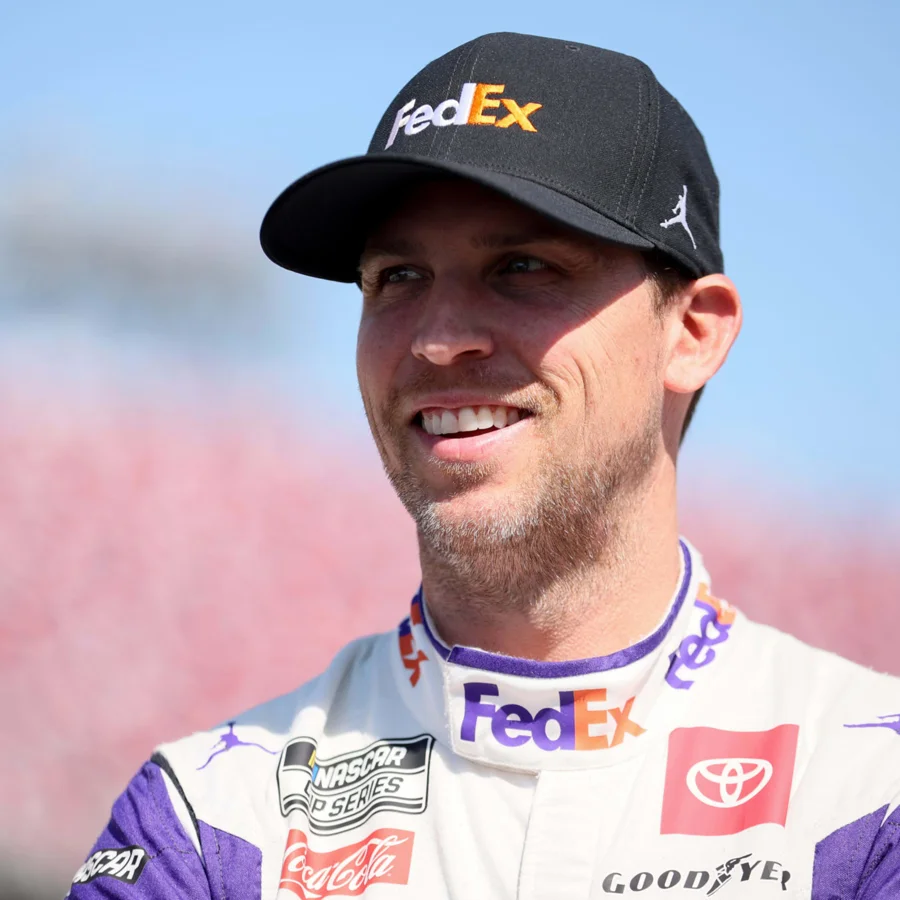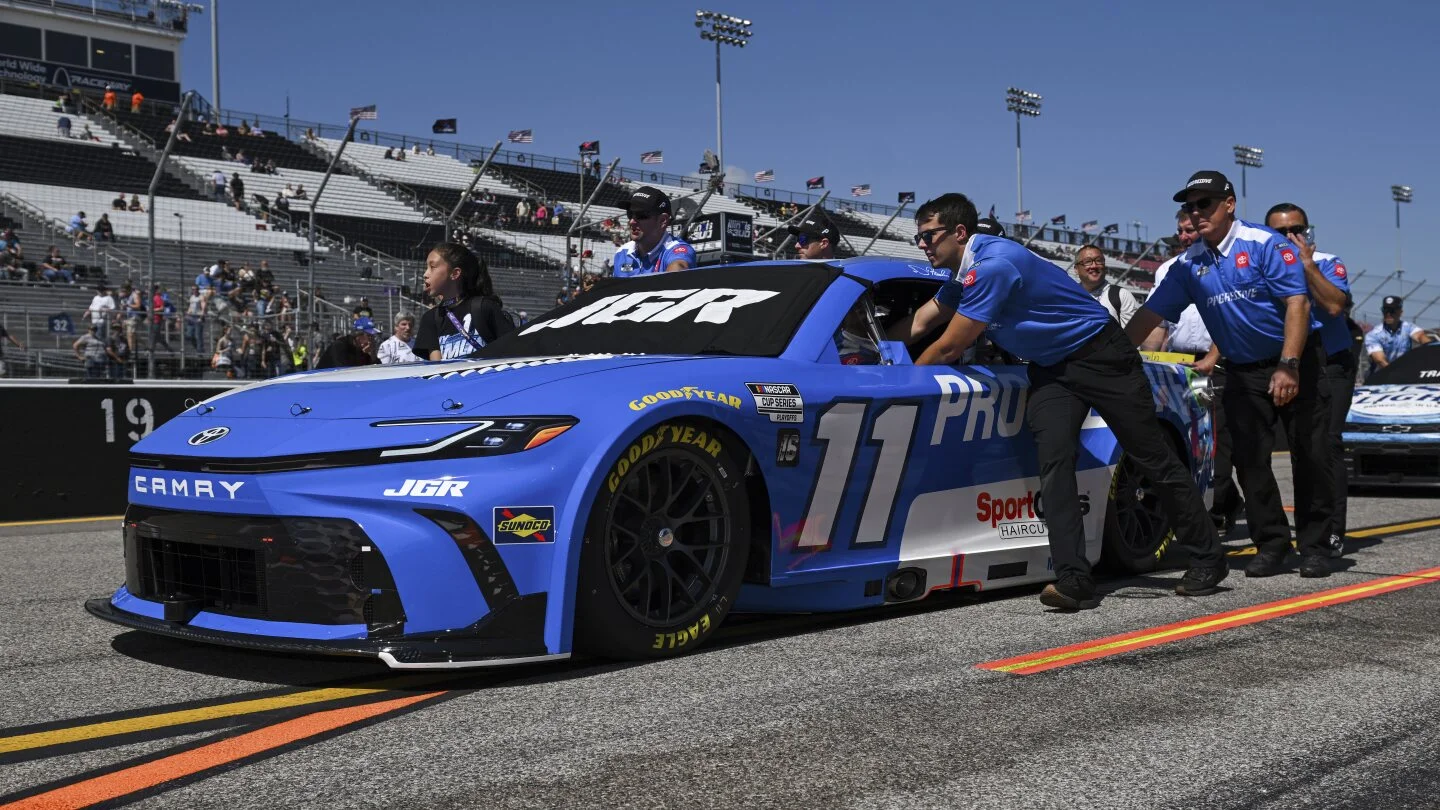Denny Hamlin offered crucial Denny Hamlin Bristol NASCAR insights to the media on Friday at Bristol Motor Speedway, outlining his approach before practice ahead of the NASCAR Cup Series Playoff race. As the Joe Gibbs Racing driver prepares for the next round in his No. 11 King’s Hawaiian toyota/”>Toyota Camry XSE, he addressed tire uncertainties, team strategy, and the challenges unique to this pivotal event.
Hamlin Approaches Practice with Team Focus
With his spot secure for the next playoff round in the NASCAR Cup Series, Hamlin discussed whether this changes his practice tactics or if the team might experiment differently given their locked-in status. He emphasized the individual agendas each team brings to Bristol, given the current points standings and playoff cutline pressure.
“I don’t think so. I think everyone is kind of racing for themselves and their own agendas. Everyone within the teams probably has a little bit of a different agenda if you look at the points positions. Not really. We will just focus on trying to win for us.”
—Denny Hamlin, Driver
Reading the Track and Tire Trends at Bristol
This weekend poses a host of unknowns for drivers and teams, particularly concerning the tire compound, which has not been tested in advance. Hamlin talked through how rubber from previous series, like trucks and Xfinity, may affect the racing groove and what kind of feedback teams hope to get from initial practice sessions. The anticipation surrounding tire wear and grip is heightened, given no significant rainfall had altered the racing surface overnight.
“Well, I think the track has some rubber already. I don’t think there has been any rain since last night, so we have some truck rubber up there. Xfinity in practice, I noticed a few guys starting to run it in. I think if it wears in these conditions, then it probably will wear tomorrow. Your guess is as good as mine. I don’t know. We will kind of wait and see. We will be highly anticipating what that first session does. It could close to the same or entirely different – we just don’t know, but I think whatever you have today – I don’t see a dramatic shift and it changing for tomorrow.”
—Denny Hamlin, Driver
A Win Doesn’t Alter Race Preparations
Hamlin’s recent win has not swayed his approach to Bristol, as he shared that while a victory reduces certain risks, it doesn’t drastically change his set-up decisions unless dramatic tire wear is observed in practice. His goal remains clear: run up front and position the car for a strong finish, with tire management at the heart of strategy decisions.

“Not really. I think the risks probably changes from inside the car. I don’t know that it changes a whole lot when it comes from set-up, certainly, it kind of depends on what happens with practice, right? If there is dramatic tire wear, certainly, there is some set-up things you can do to make that better, but ultimately, you are just trying to get to lap 500 up front, and with a shot, and I don’t know that changes a whole lot if you have a win or not. I think everyone is going to try to make their cars as fast as they can, and then you make setup decisions based on the tire wear you see to try to make it last that long.”
—Denny Hamlin, Driver
Unpredictable Tire Conditions Create Uncertainty
The lack of a pre-event tire test for this NASCAR weekend increases both excitement and anxiety among drivers and crew chiefs. Hamlin described the opportunity this creates for “comers and goers,” as teams who adapt best to the tire and track conditions could see their performance swing dramatically from others, making Bristol Motor Speedway even more of a wildcard in the playoffs.
He noted that none of the teams have data on the new tire, highlighting the level playing field and the challenge of fine-tuning the setup during limited track time.
Joe Gibbs Racing Consistency Across All Tracks
Asked whether strong performances at Bristol might indicate that every track can suit Joe Gibbs Racing cars, Hamlin reflected on the team’s evolution throughout the season. While some races—such as early outings at Las Vegas and other typically strong tracks—showed weaknesses, the organization has addressed these issues, allowing JGR to consistently compete for top spots.
“Certainly, we have a good shot at it. I think that the Gibbs team in general doesn’t have a weak track, but we had weak performances earlier in the year. If you look at Las Vegas, I don’t think any of our cars were fast at that race. I can think of one or two other races in the beginning of the season where we all kind of struggled, and they were all tracks where typically we are pretty strong. I think we’ve hemmed that up a little bit, where we’ve identified some of the philosophies that we did that weren’t right, and so now, certainly, every weekend we go there and one of the Gibbs cars should be in the top-three or so in speed and have a shot to win.”
—Denny Hamlin, Driver
Lessons from Previous Races and Track History
Although Hamlin doesn’t focus heavily on past races, such as last year’s Loudon event, he recognized that unique circumstances like wet weather and use of rain tires on high-speed ovals can dramatically alter the racing experience. He acknowledged the challenge and unpredictability that such conditions introduce, hoping for a dry event this year. These reflections influence the mental preparation and team discussions ahead of Bristol and other playoff venues.
“I don’t have a great recollection of it. It is not part of my mindset totally, quite yet as far as going back and learning track history. Certainly, it is on the forefront of our team and what we are focused on. It is always an interesting track, but that was the first time I remember being on a higher speed oval, I guess we did at Richmond, but on a higher speed oval – with these rain tires and the wet conditions, it was very, very sketchy from my standpoint. I just hope it stays dry from my point.”
—Denny Hamlin, Driver
Track Treatment and PJ1 Expectations
Bristol Motor Speedway’s history with PJ1 traction compound has been a topic for drivers, as its application can change the racing lines and how cars handle throughout the race. Hamlin remarked that the surface this year appears similar to prior events, expecting the compound to transition visually as the race progresses but not to create unexpected variables for competitors.
“No, it looks very similar to what we’ve had in the past here in races during practice. Probably as the race goes on, it will go through a transition where it actually goes darker, and then it goes lighter by the end of the race as we start picking it up. I will be looking at the Xfinity race to see how that transition is going, but NASCAR and the track has said they’ve applied it the same as they always have, and they always have applied it very similar, so I wouldn’t expect that to be one of the variables that we are chasing.”
—Denny Hamlin, Driver
Mindset Differences: Above versus Below the Cutline
Reflecting on playoff pressures, Hamlin described the shift in mentality that comes with being safely in the next round versus fighting for survival below the playoff cutline. This year, he has found himself in a more relaxed and confident position, unaware of the underlying stressors that previously accompanied similar races. The shift allows him to focus more on performance and less on outside factors, a sentiment echoed by many in high-stakes competition.
“It was definitely different. I tried to approach each week the same when it comes to my process, but now certainly, your mind plays games with you though. There is certainly a different mindset when you are locked in versus being below the cut or being near the cut, so without a doubt, I’m resting much, much easier this year in the Playoffs in general. I’m way more loose with it, whatever the results are, the results are. So that helps, and on top of that, winning – it just makes me even looser. Certainly, yes, anytime I go into a cut race and I’m close to the cut, I have to pull myself back to not think about the things that I don’t control, and that is typically what I think drivers would say when they get in these scenarios where they are facing elimination – they are worrying about all of the things they can’t control. It is certainly a different mindset.”
—Denny Hamlin, Driver
The Pressure and Challenge of Playoff Racing
Comparing this year’s position to last year, Hamlin revealed that he was able to avoid overwhelming pressure because of the confidence he had in his team’s speed. While those on or near the cutline face extra anxiety, Hamlin knew his entry was strong enough to advance without needing luck or poor performances from rivals. However, the challenge of staying above the cut remains part of the psychological landscape for many drivers each playoff season.
“I didn’t let it dominate me for sure, but I just knew that we were good enough. One of the variables if you make cutlines or not is that – are you fast enough? Just on merits or do you need someone to not be as good as they normally are, and then you avoid trouble. Well, when you are fast, you just have to worry about the avoiding trouble part of it – and not the, I also hope we have speed. It made it very easy for me to not have to worry about that last year, because I knew we were going to have one of those covered. The other part is the part you typically worry about. I would say for some that are near the cutline, I think some of them are probably thinking about I hope I have one of those two elements, and you need two to survive.”
—Denny Hamlin, Driver
Mechanical Demands of Bristol on Next Gen Cars
Hamlin explained how Bristol’s physical nature and rapid succession of corners place intense demands on both driver and machine. Since introducing the Next Gen car, Bristol has seen increased mechanical failures, particularly in steering and suspension systems due to the track’s high banking and short straightaways. Surviving the mechanical toll of 1,000 corners—twice per lap over 500 laps—is a significant part of the battle during this race weekend.
“It does. When Next Gen was first introduced, this was one of the tracks where there was a lot of mechanical failures – mostly in the steering components, and some in the suspension components. A lot of it is because the car loads up so quickly and so hard at this track. It always has taken its toll, and I don’t know how many races we’ve run here, but it always seems like there is always one where the track or the conditions have taken its toll on the car, but beyond that – the driver as well. 1,000 corners you have to run around this place, and you don’t get a whole lot of a break on the straightaways because they are so short. For sure, it takes its toll on all of the above.”
—Denny Hamlin, Driver
What Lies Ahead at Bristol Motor Speedway
Denny Hamlin’s remarks highlight the blend of uncertainty, intensity, and strategy that mark Bristol’s role in the NASCAR Cup Series Playoffs. The tire situation remains a chief unknown, with teams like Joe Gibbs Racing balancing past lessons and present pressures as they seek to advance in the Playoffs. Bristol Motor Speedway will test machines, drivers, and minds alike as points, mechanical resilience, and strategy combine in an event where every lap can redefine championship hopes.
